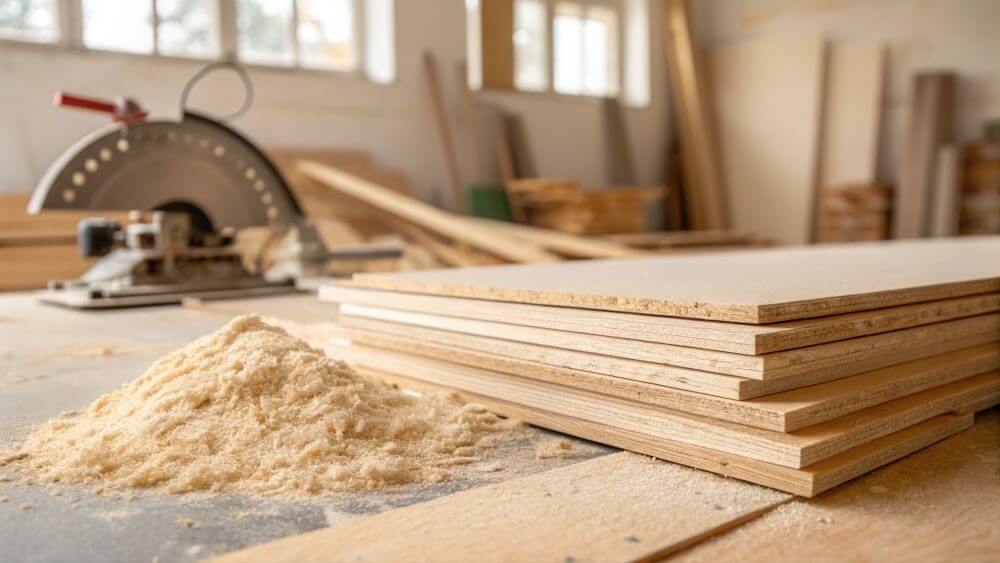Plywood has long been a favorite in both construction and design circles, and it’s easy to see why. Its unique combination of strength, flexibility, and affordability allows it to meet a wide range of demands, from supporting heavy loads in structural applications to providing a smooth, attractive surface for interior designs.
Unlike many other materials, plywood adapts well to different environments, shapes, and finishes, giving builders and designers the freedom to create durable and stylish solutions without compromising on performance. Its reliability and versatility have made it a staple in projects of all sizes, from residential homes to commercial spaces.
Read on to discover why plywood board continues to be the go-to material for builders and designers and how it can elevate your next project.
Ease of Use and Workability
Plywood offers unmatched convenience for builders and designers who need materials that are practical, flexible, and efficient. Its adaptability saves time on-site and allows for creative precision in fabrication.
For projects requiring exact measurements and intricate designs, relying on a professional service can greatly enhance results. Working with cutwrights.com or another reputable company specializing in bespoke cutting, edging, and drilling services for boards ensures precise results. This support makes plywood a more reliable choice for interior and exterior construction projects and custom furnishings.
The following are the top advantages of plywood in terms of workability:
- Easy cutting and shaping: Plywood sheets can be smoothly cut with standard tools, allowing builders to create precise dimensions quickly. This is especially useful for custom furniture or unique design elements where exact shapes are critical.
- Smooth finishing options: Plywood accepts paint, veneers, laminates, and stains without losing structural integrity. Baltic Birch Plywood, Red Oak Plywood, and other premium plywood sheets provide a polished surface for both aesthetic appeal and durability.
- Lightweight yet strong: Plywood maintains strength while remaining easy to handle and transport, reducing strain during installation in construction projects. Its manageable weight simplifies assembly of large panels or furniture components.
These qualities make plywood an ideal material for projects that demand accuracy, speed, and flexibility. Its compatibility with professional cutting and finishing services, combined with its engineered woods advantages, ensures that both builders and designers can deliver high-quality results efficiently.
Strength and Durability
Plywood is prized for its ability to withstand heavy use while maintaining stability and performance. Its engineered layers provide resilience that is critical for construction projects and custom furnishings.
Here are the key strengths that make plywood a dependable material:
- Layered construction: Multiple veneers are glued in alternating grain directions, creating a stable board that resists bending, twisting, and warping. This structure ensures consistent performance across large panels and reduces the risk of material failure over time.
- Load-bearing capacity: High-quality plywood can support significant weight, making it suitable for floors, roofing, and furniture frameworks. Its strength allows builders to use thinner panels without compromising structural integrity, which also helps reduce overall material costs.
- Moisture resistance: Certain varieties, such as Marine Grade Plywood or pressure-treated plywood, can withstand damp conditions and minor water exposure. This durability extends the life of both interior and exterior projects and minimizes maintenance needs.
These qualities make plywood a reliable choice for builders and designers who need materials that perform consistently while supporting both functional and aesthetic demands. Its combination of engineered strength and resilience ensures that structures and furnishings remain durable over years of use.
Versatility in Design and Construction
Plywood is highly adaptable, making it a preferred choice for a variety of creative and practical applications. Its consistent strength and smooth surface allow designers to create furniture, fixtures, and structural elements with precision and reliability. This flexibility makes it suitable for both small-scale projects, such as custom shelving or a home office, and larger architectural undertakings.
In addition, plywood works well with different finishes and treatments, enabling a wide range of design aesthetics. From polished surfaces for contemporary interiors to textured finishes for rustic spaces, it accommodates diverse styles while maintaining structural integrity. Designers can confidently use it for visible elements without compromising on durability.
Furthermore, plywood can be shaped, layered, or bent to achieve specialized forms that are difficult with other materials. This capability allows for innovative partitions, curved panels, and custom furniture designs, enhancing both functionality and visual appeal. Its versatility ensures that it meets the needs of builders and designers alike, supporting both practical construction and creative expression.
Cost-effectiveness and Availability
Plywood offers excellent value for both large-scale construction projects and smaller design endeavors. Its cost efficiency stems from providing strength and durability at a lower price compared to solid wood, allowing builders and designers to maintain quality while managing budgets. As a result, it remains a practical choice for projects that require reliable materials without overspending.
Its widespread availability makes planning and execution easier for professionals. Easily sourced from hardware stores, lumber suppliers, and specialty retailers, plywood reduces delays in procurement and ensures that construction schedules stay on track. This accessibility allows teams to focus on completing projects efficiently rather than searching for the right materials.
Moreover, plywood comes in multiple grades to suit diverse project requirements. From high-end design applications to standard construction work, these options provide flexibility in balancing aesthetics, performance, and cost. Together, affordability, accessibility, and variety make plywood a dependable material for a wide range of building and design projects.
Final Thoughts
Plywood’s blend of strength, versatility, affordability, and ease of use makes it an indispensable material for builders and designers. From structural support to creative furnishings, it provides solutions that meet both functional and aesthetic demands. Choosing plywood ensures reliability, efficiency, and design freedom, explaining why it continues to be the go-to choice in construction and design industries.

















